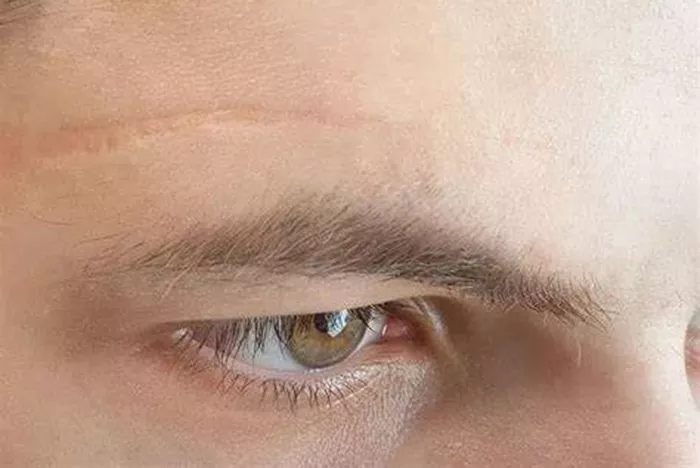Scars are a natural outcome of the skin’s healing process following an injury. However, deep scars, whether from accidents, surgeries, or severe acne, can be particularly challenging and often carry emotional and aesthetic impacts. This guide provides a detailed exploration of methods to smooth deep scars, drawing on the latest medical advice and therapeutic techniques.
Understanding Scars: Types and Causes
To effectively treat and smooth deep scars, it’s crucial to understand the types of scars and their causes. Scars are primarily made up of fibrous tissue and can vary significantly in appearance and texture.
Atrophic Scars: These scars create a sunken or pitted area on the skin, commonly resulting from acne or chickenpox.
Hypertrophic Scars: These are raised scars that do not extend beyond the boundary of the original wound but can be thick and red.
Keloid Scars: Similar to hypertrophic scars, keloids are raised and can grow beyond the size of the wound, sometimes appearing much larger than the original injury.
The formation of these scars depends on several factors including the depth and size of the wound, the location on the body, the healing process, and genetic predispositions.
Current Medical Treatments for Deep Scars
Advancements in medical treatments have provided many options for individuals looking to minimize the appearance of deep scars.
1. Surgical Treatment:
Scar Revision: This procedure involves removing or altering the scar tissue to make the scar less noticeable. Techniques vary based on the scar’s size and location.
Skin Grafts: Used primarily for scars that have caused significant skin loss, skin grafts involve transplanting skin from one area of the body to another.
2. Laser Therapy:
Fractional Laser Resurfacing: This treatment uses a laser to deliver a matrix of pinpoint beams that create zones of injury in the skin, which stimulates the body’s natural healing process and can lead to smoother skin texture.
Pulsed Dye Laser: Often used for red scars, this laser targets blood vessels in the scar tissue to reduce redness and can help flatten raised scars.
3. Injectable Treatments:
Steroid Injections: Typically used for hypertrophic or keloid scars, steroids can reduce itching, redness, and swelling, helping to flatten the scar.
Dermal Fillers: Used for atrophic scars, fillers can raise the depressed areas to the level of surrounding skin.
4. Cryotherapy:
Involves freezing the scar tissue to reduce its size, especially effective for small keloid scars.
Natural and Home Remedies
While medical treatments can be highly effective, some individuals prefer exploring natural or home-based remedies to help soften and reduce the visibility of their scars.
1. Silicone Gel Sheeting:
A widely recommended at-home treatment, silicone gel sheets can help flatten and soften raised scars and are easy to use.
2. Onion Extract Gel:
Available over-the-counter, this gel can help improve the texture and condition of scars over several months.
3. Honey:
Known for its anti-inflammatory and healing properties, honey can be applied to scars to promote healing and reduce inflammation.
4. Essential Oils:
Oils such as lavender, rosehip, and tea tree have properties that may assist in the healing of scar tissues when used properly.
Preventive Measures and Scar Management
Managing the formation of scars begins with proper wound care. Keeping a wound clean, covered, and moist can prevent worse scarring. Immediate treatment can also include:
Pressure Garments: Especially useful for burns, pressure garments worn over the healing areas can prevent or reduce scarring.
Avoiding Sun Exposure: UV rays can darken scars and make them more noticeable; protecting scars from the sun is essential for their proper healing.
Psychological Impact and Coping Mechanisms
The presence of visible scars can also impact a person’s psychological well-being. Coping strategies include:
Counseling and Support Groups: Talking to a professional or others with similar experiences can provide emotional support.
Makeup and Camouflage: Special makeup for scars can cover discoloration and make scars less noticeable.
Conclusion
While deep scars can be a source of self-consciousness and discomfort, there are numerous treatments and home remedies available that can significantly improve their appearance. It is essential to consult with healthcare providers to choose the most appropriate method based on the type of scar and individual health factors. With the right approach, it is possible to reduce the visibility of deep scars and enhance one’s quality of life.
[inline_related_posts title=”You Might Be Interested In” title_align=”left” style=”list” number=”6″ align=”none” ids=”8256,8125,8117″ by=”categories” orderby=”rand” order=”DESC” hide_thumb=”no” thumb_right=”no” views=”no” date=”yes” grid_columns=”2″ post_type=”” tax=””]
































